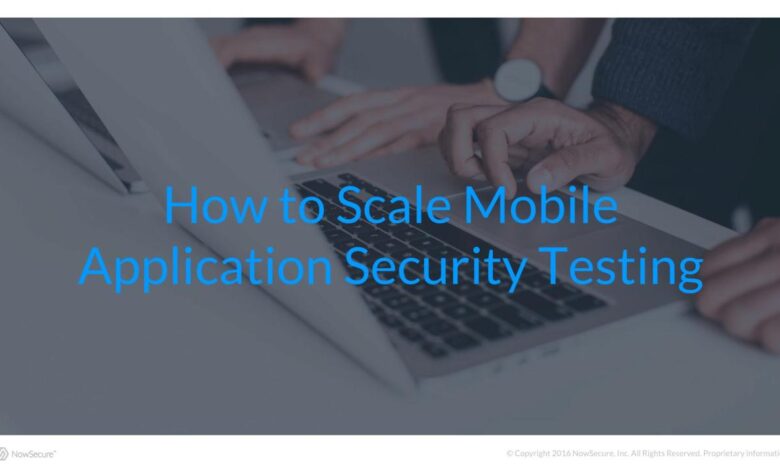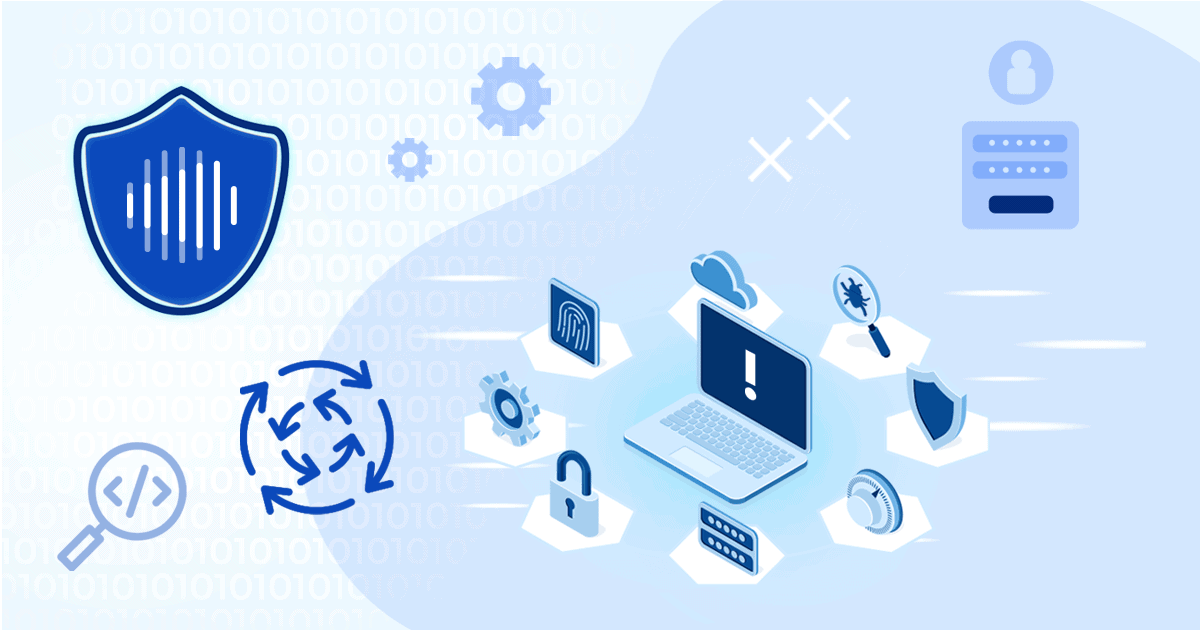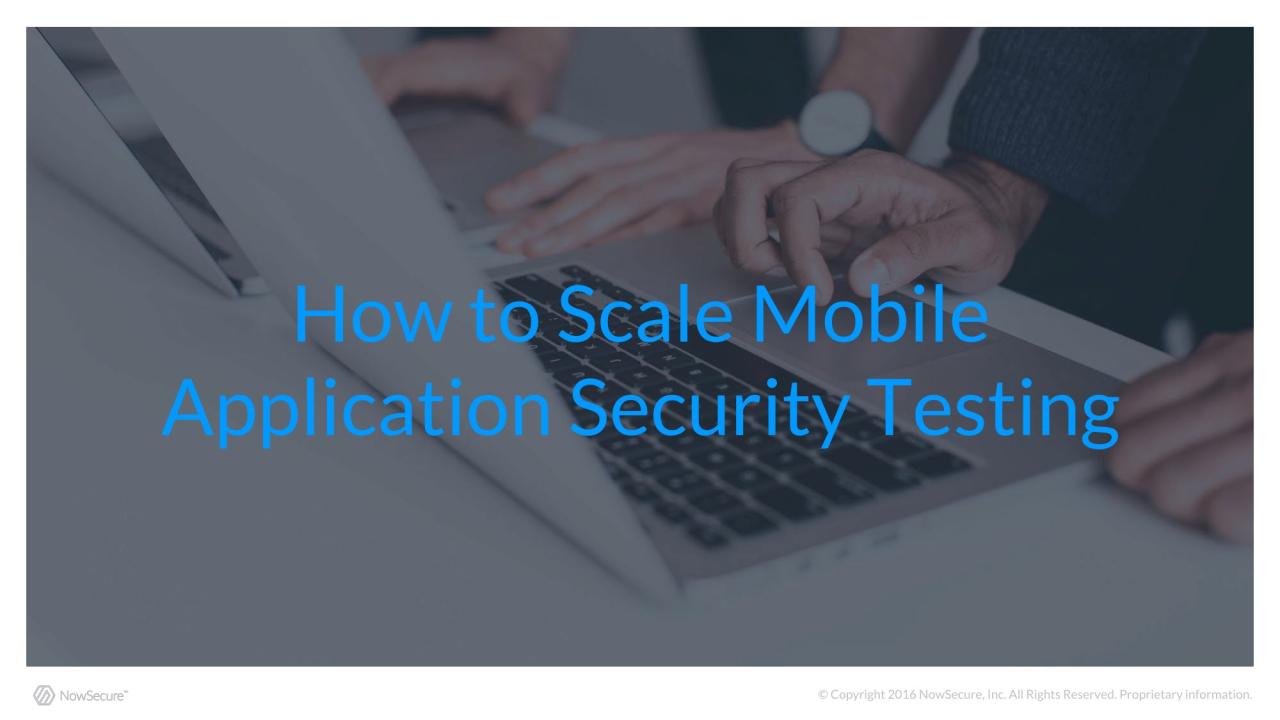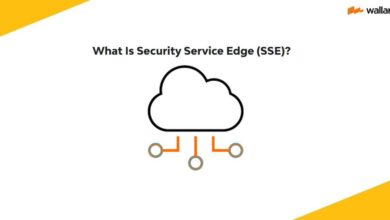
Application Security Testing Safeguarding Telecoms & IT
Application security testings role in safeguarding telecommunications and it infrastructure – Application Security Testing: Safeguarding Telecommunications and IT infrastructure – it’s a phrase that might sound technical, but it’s crucial to our daily lives. Think about it: every time you make a call, send a text, or stream a video, you’re relying on a complex network of applications and infrastructure. These systems are constantly under attack from sophisticated cyber threats, making robust application security testing absolutely vital.
This post delves into the world of securing our digital communications, exploring the methods, challenges, and future trends in this critical area.
We’ll cover a range of topics, from understanding the evolving threat landscape in telecommunications – including the unique vulnerabilities of 5G and IoT devices – to exploring different application security testing methodologies like SAST and DAST. We’ll also examine how to secure specific applications, such as VoIP and cloud-based systems, and discuss the importance of integrating security testing into the entire software development lifecycle (SDLC).
Finally, we’ll touch upon regulatory compliance, building a secure development culture, and the impact of emerging technologies like AI and quantum computing.
The Expanding Threat Landscape in Telecommunications
The telecommunications sector faces an increasingly sophisticated and diverse range of cyber threats, impacting not only the smooth operation of networks but also the safety and security of individuals and nations. These threats evolve rapidly, exploiting vulnerabilities in both established and emerging technologies, demanding a proactive and adaptive security posture. The interconnected nature of modern telecommunications infrastructure means a successful attack can have far-reaching consequences, cascading across multiple systems and impacting numerous users.The increasing reliance on interconnected devices and the rapid deployment of new technologies like 5G and the Internet of Things (IoT) have significantly expanded the attack surface.
This creates new opportunities for malicious actors to exploit vulnerabilities and compromise sensitive data, leading to significant financial losses, reputational damage, and even disruption of critical services. Understanding the nature of these evolving threats is crucial for developing effective security measures.
Vulnerabilities in 5G Networks and IoT Devices
G networks, while offering significant improvements in speed and capacity, introduce new security challenges. The increased density of network connections and the reliance on software-defined networking (SDN) create more potential entry points for attackers. For instance, vulnerabilities in the network’s core infrastructure, radio access network (RAN), and user equipment (UE) can be exploited for unauthorized access, denial-of-service attacks, and data breaches.
Furthermore, the lack of standardization in security protocols across different 5G vendors can exacerbate these risks. IoT devices, with their often limited processing power and security features, represent another significant vulnerability. Their proliferation across various sectors, including smart homes, smart cities, and industrial control systems, creates a massive attack surface. Many IoT devices lack robust authentication and encryption mechanisms, making them susceptible to hacking and exploitation.
A compromised IoT device can serve as a gateway to access larger networks, potentially leading to widespread disruption. The sheer number of these devices also makes comprehensive security monitoring and management incredibly challenging.
The Role of Insider Threats and Human Error
Human error and insider threats remain significant factors in compromising telecommunication security. Negligence, such as failing to update software or adhering to security protocols, can create vulnerabilities that malicious actors can exploit. Similarly, social engineering attacks, which manipulate individuals into divulging sensitive information or granting unauthorized access, continue to be effective. Insider threats, stemming from malicious or negligent employees, contractors, or business partners, can cause severe damage.
These individuals often possess privileged access to sensitive systems and data, making them particularly dangerous. A disgruntled employee, for example, could intentionally sabotage network operations or steal valuable data. Therefore, robust security awareness training, strong access control mechanisms, and regular security audits are crucial for mitigating these risks. Background checks and continuous monitoring of employee activity can also help detect and prevent insider threats.
Application Security Testing Methodologies

Securing telecommunications applications requires a multi-faceted approach to application security testing. The sheer complexity of these systems, often involving interconnected networks and sensitive data, necessitates a robust testing strategy that incorporates various methodologies to identify and mitigate vulnerabilities. This discussion focuses on key methods and their application within the telecommunications sector.
Static and Dynamic Application Security Testing (SAST and DAST)
Static and dynamic application security testing represent two fundamental approaches to identifying vulnerabilities. SAST analyzes the application’s source code without executing it, identifying potential flaws like buffer overflows or SQL injection vulnerabilities. DAST, on the other hand, tests the running application by simulating attacks, revealing vulnerabilities like cross-site scripting (XSS) or insecure authentication mechanisms. In a telecommunications context, SAST is crucial during the development lifecycle, helping developers address vulnerabilities early.
DAST provides a complementary perspective, evaluating the application’s security posture after deployment and potentially revealing vulnerabilities missed by SAST. While SAST offers a more in-depth code analysis, potentially identifying vulnerabilities before they reach production, DAST focuses on the runtime behavior of the application, mimicking real-world attacks. The combination of both methods provides a more comprehensive security assessment.
For example, a telecommunications billing system could benefit from SAST to detect potential SQL injection vulnerabilities in the database interaction code and DAST to identify vulnerabilities in the user authentication process.
Penetration Testing Techniques in Telecommunications Applications
Penetration testing simulates real-world attacks to identify vulnerabilities. In the telecommunications sector, this involves a range of techniques targeting various application layers. For example, fuzzing can be used to test the robustness of protocols like SIP (Session Initiation Protocol) by sending malformed or unexpected data packets to identify vulnerabilities. Social engineering simulations can assess the effectiveness of security awareness training among employees handling sensitive customer data.
Network-based attacks, like port scanning and vulnerability scanning, can pinpoint weaknesses in the network infrastructure supporting the application. Finally, exploiting known vulnerabilities in open-source components used in the application (often identified through SCA) is a critical aspect of penetration testing. A successful penetration test on a telecommunications application might reveal vulnerabilities such as weak password policies, insecure API endpoints, or insufficient input validation leading to data breaches or service disruptions.
Software Composition Analysis (SCA) and Open-Source Vulnerabilities
Software composition analysis (SCA) is paramount in identifying and managing open-source vulnerabilities within telecommunication applications. Many modern applications rely heavily on open-source components, introducing potential security risks if these components contain known vulnerabilities. SCA tools automatically scan the application’s codebase, identifying all used open-source components and checking them against known vulnerability databases. This proactive approach helps mitigate the risks associated with using potentially insecure components.
Failing to address these vulnerabilities can have significant consequences, ranging from service disruptions to data breaches and regulatory non-compliance. The impact on a telecommunications provider could be severe, potentially affecting thousands of customers and causing reputational damage.
| SCA Tool | Features | Strengths | Weaknesses |
|---|---|---|---|
| Black Duck | Comprehensive vulnerability database, policy management, integration with DevOps pipelines | Excellent vulnerability detection, strong reporting capabilities | Can be expensive, complex setup |
| Sonatype Nexus IQ | Automated vulnerability detection, license compliance checking, integration with various development tools | User-friendly interface, good integration with CI/CD | Limited support for some less popular open-source projects |
| Snyk | Vulnerability detection, license compliance, integration with various IDEs and CI/CD pipelines | Ease of use, good developer experience, wide range of integrations | May miss some less common vulnerabilities |
Securing Specific Telecommunication Applications
The telecommunications industry relies heavily on a diverse range of applications, each presenting unique security challenges. Robust security measures are crucial not only to protect sensitive user data but also to maintain the integrity and availability of these services. This section will delve into the specific security considerations for VoIP applications, cloud-based telecommunication platforms, and mobile applications used for telecommunication services.
VoIP Application Security Challenges and Mitigation Strategies
Voice over Internet Protocol (VoIP) applications, while offering cost-effective and flexible communication, introduce several security vulnerabilities. These vulnerabilities stem from the inherent nature of transmitting voice data over IP networks, which are susceptible to various attacks. Effective mitigation strategies are essential to ensure the confidentiality, integrity, and availability of VoIP communications.
One major concern is eavesdropping. Unencrypted VoIP calls are easily intercepted by malicious actors using packet sniffers. Therefore, implementing strong encryption protocols like SRTP (Secure Real-time Transport Protocol) is paramount. SRTP encrypts the media stream and provides authentication, protecting against unauthorized access and modification of voice data.
Another significant risk is denial-of-service (DoS) attacks, which can overwhelm VoIP servers and render them unavailable. Implementing robust DDoS mitigation techniques, such as rate limiting, traffic filtering, and using a content delivery network (CDN), can significantly reduce the impact of these attacks. Furthermore, regularly updating VoIP software and firmware to patch known vulnerabilities is crucial in preventing exploitation.
Proper network segmentation and access control lists (ACLs) can further limit the impact of successful attacks.
Secure Architecture for a Cloud-Based Telecommunication Application
Designing a secure architecture for a cloud-based telecommunication application requires a multi-layered approach, incorporating security considerations at every stage of the development lifecycle. This includes robust authentication and authorization mechanisms, data encryption both in transit and at rest, and regular security audits and penetration testing.
A secure architecture should leverage the inherent security features offered by cloud providers, such as virtual private clouds (VPCs) and identity and access management (IAM) systems. Employing a microservices architecture can enhance resilience and limit the impact of security breaches. Each microservice should be independently secured, minimizing the blast radius of a compromise. Data encryption using strong algorithms like AES-256 is crucial for protecting sensitive user data, both during transmission and when stored in the cloud.
Regular security assessments, including vulnerability scans and penetration testing, are vital for identifying and addressing potential weaknesses before they can be exploited.
Implementing a zero-trust security model is highly recommended. This approach assumes no implicit trust and verifies every user and device attempting to access the system. Multi-factor authentication (MFA) should be mandatory for all users, providing an extra layer of security against unauthorized access. Regular security audits and penetration testing are crucial for identifying and addressing potential vulnerabilities.
The use of intrusion detection and prevention systems (IDPS) can further enhance the overall security posture.
Securing Mobile Applications for Telecommunication Services
Mobile applications are increasingly used for accessing telecommunication services, making their security a critical concern. Robust authentication mechanisms, secure data encryption, and regular security updates are essential to protect user data and prevent unauthorized access.
Strong authentication methods, such as password-based authentication with multi-factor authentication (MFA) and biometric authentication, should be implemented to prevent unauthorized access. Data encryption, both in transit (using TLS/SSL) and at rest (using strong encryption algorithms), is crucial to protect sensitive user information such as call logs, contact details, and billing information. Regular security updates and patching are vital to address vulnerabilities and prevent exploitation.
Implementing secure coding practices and conducting thorough security testing throughout the development lifecycle are essential for building secure mobile applications. Regular security audits and penetration testing should be performed to identify and address any vulnerabilities.
Integration of Security Testing into the SDLC
Integrating application security testing (AST) into the Software Development Lifecycle (SDLC) is no longer a luxury; it’s a necessity for telecommunications companies operating in today’s threat landscape. Failure to embed security from the outset significantly increases vulnerability exposure and the cost of remediation later in the process. A robust AST strategy ensures that security is considered and addressed proactively, rather than reactively, minimizing risks and maximizing the resilience of telecommunications applications and infrastructure.Building secure applications requires a shift left approach, integrating security practices throughout the SDLC.
This means moving beyond the traditional model of security testing as a separate phase and instead embedding it into each stage, from initial design to ongoing maintenance. This proactive approach not only reduces vulnerabilities but also improves efficiency by identifying and addressing issues early, before they become costly problems.
A Step-by-Step Guide to Integrating AST into the SDLC
The following steps Artikel a practical approach to integrating AST into the SDLC for telecommunications projects. This process should be tailored to the specific methodologies and technologies used within the organization.
- Requirements Gathering and Design: Security requirements should be defined alongside functional requirements. This involves identifying potential threats and vulnerabilities specific to the telecommunications environment and defining appropriate security controls. For example, consideration should be given to data privacy regulations (like GDPR or CCPA) and the specific security needs of the application (e.g., authentication, authorization, data encryption).
- Development and Coding: Secure coding practices should be enforced through training, code reviews, and the use of static application security testing (SAST) tools. SAST tools automatically analyze code for vulnerabilities during the development phase, identifying potential issues like SQL injection, cross-site scripting (XSS), and buffer overflows before they reach production.
- Testing: This phase encompasses various testing methodologies including SAST, dynamic application security testing (DAST), and penetration testing. DAST tools simulate real-world attacks to identify vulnerabilities in running applications. Penetration testing involves ethical hackers attempting to exploit vulnerabilities to assess the application’s overall security posture. This phase should also incorporate security testing of APIs and microservices, which are increasingly common in telecommunications applications.
- Deployment: Before deployment, a final security review should be conducted to ensure all identified vulnerabilities have been remediated. This may involve additional penetration testing or security scanning to confirm the effectiveness of the implemented security controls. Automated deployment pipelines should integrate security checks to prevent the deployment of insecure code.
- Maintenance and Monitoring: Ongoing security monitoring and vulnerability management are crucial. This includes regularly scanning applications for new vulnerabilities, applying security patches, and monitoring for suspicious activity. Continuous integration/continuous delivery (CI/CD) pipelines should incorporate automated security checks as part of the build and release process.
Integrating Security Testing into Agile and DevOps Methodologies
Agile and DevOps methodologies emphasize iterative development and rapid deployment. Integrating AST into these frameworks requires a flexible and automated approach.Security should be incorporated into each sprint or iteration. This may involve conducting SAST analysis during the coding phase, performing DAST testing at the end of each sprint, and integrating automated security checks into the CI/CD pipeline. The use of automated security tools is critical for maintaining speed and efficiency within Agile and DevOps environments.
Security champions or dedicated security engineers can be embedded within Agile teams to ensure security is a shared responsibility. Examples of tools that facilitate this include Jenkins, GitLab CI, and Azure DevOps, which can be configured to trigger automated security scans as part of the build process.
Security Testing Throughout the Entire Lifecycle
Security testing is not a one-time event but an ongoing process that should be integrated into every phase of the SDLC. From the initial design phase, where security requirements are defined, to the maintenance phase, where vulnerabilities are addressed and the application is continuously monitored, security must be a top priority. Ignoring security at any stage can lead to significant vulnerabilities that can be exploited by attackers.
This comprehensive approach ensures that applications are secure by design, reducing the risk of costly security breaches and maintaining the integrity of the telecommunications infrastructure.
Regulatory Compliance and Standards

Navigating the complex regulatory landscape is crucial for telecommunication companies. Failure to comply with relevant standards not only exposes businesses to hefty fines and legal repercussions but also severely damages their reputation and erodes customer trust. Application security testing plays a pivotal role in ensuring adherence to these regulations and mitigating potential risks.The telecommunications industry is subject to a multitude of regulations, varying by jurisdiction but often overlapping in their fundamental principles.
These regulations aim to protect user data, maintain network integrity, and ensure the overall security of communications infrastructure. Understanding and implementing the appropriate security controls is paramount for maintaining compliance.
Key Regulatory Compliance Standards and Frameworks
Several key regulatory frameworks and standards directly impact application security testing within the telecommunications sector. These frameworks provide a structured approach to identifying, assessing, and mitigating security risks. Non-compliance can lead to significant financial penalties, reputational damage, and loss of business.
- General Data Protection Regulation (GDPR): This EU regulation mandates stringent data protection measures, including robust security controls for processing personal data. Application security testing is vital for ensuring compliance, particularly regarding data breaches and unauthorized access.
- NIST Cybersecurity Framework (CSF): This US-based framework provides a voluntary guidance document for organizations to improve their cybersecurity posture. It emphasizes risk management, identification, protection, detection, response, and recovery. Application security testing aligns directly with the “protect” and “detect” functions of the CSF.
- Payment Card Industry Data Security Standard (PCI DSS): For telecommunication companies processing card payments, PCI DSS compliance is mandatory. This standard dictates strict security requirements for protecting cardholder data, requiring rigorous application security testing to identify and remediate vulnerabilities.
- California Consumer Privacy Act (CCPA) and similar state laws: These laws grant consumers more control over their personal data, requiring companies to implement robust security measures to prevent data breaches and unauthorized access. Application security testing is crucial for demonstrating compliance.
Implications of Non-Compliance
Non-compliance with these regulations carries significant consequences for telecommunication companies. These consequences extend beyond financial penalties and legal action, impacting the company’s overall reputation and long-term sustainability.
- Financial Penalties: Regulatory bodies can impose substantial fines for non-compliance, potentially reaching millions of dollars depending on the severity of the violation and the amount of data compromised.
- Reputational Damage: Data breaches and security incidents resulting from non-compliance can severely damage a company’s reputation, leading to loss of customer trust and business.
- Legal Actions: Companies may face lawsuits from affected customers or regulatory bodies, leading to costly legal battles and potential settlements.
- Loss of Business: Customers may switch to competitors after a data breach or security incident, resulting in significant revenue loss.
- Operational Disruptions: Security incidents can disrupt operations, leading to downtime and loss of productivity.
Essential Security Controls and Testing Procedures
To ensure compliance with relevant industry regulations, telecommunication companies must implement a comprehensive set of security controls and testing procedures. This involves a proactive and ongoing approach to risk management.
- Regular Vulnerability Scanning and Penetration Testing: Identify and remediate vulnerabilities in applications before they can be exploited.
- Secure Code Review: Analyze application code for security flaws during the development process.
- Static and Dynamic Application Security Testing (SAST/DAST): Employ automated tools to detect vulnerabilities in the application’s code and runtime behavior.
- Software Composition Analysis (SCA): Identify and manage vulnerabilities in third-party components used in applications.
- Data Loss Prevention (DLP): Implement measures to prevent sensitive data from leaving the organization’s control.
- Access Control Management: Restrict access to applications and data based on the principle of least privilege.
- Security Awareness Training: Educate employees about security risks and best practices.
- Incident Response Plan: Develop a plan to handle security incidents effectively and efficiently.
- Regular Security Audits: Conduct regular audits to assess the effectiveness of security controls and identify areas for improvement.
- Compliance Documentation: Maintain comprehensive documentation to demonstrate compliance with relevant regulations.
Building a Secure Development Culture: Application Security Testings Role In Safeguarding Telecommunications And It Infrastructure
Cultivating a security-conscious culture isn’t just a box to tick; it’s the bedrock of effective application security within a telecommunications organization. A proactive approach, embedding security into the very fabric of the development lifecycle, is far more effective than reactive patching after vulnerabilities are discovered. This requires a shift in mindset, from viewing security as an afterthought to integrating it seamlessly into every stage of the process.Security awareness training and education are vital components in fostering this culture.
Simply mandating training isn’t enough; it needs to be engaging, relevant, and tailored to the specific roles and responsibilities within the organization. Developers need to understand the implications of their code, operations teams need to know how to identify and respond to security incidents, and management needs to champion security as a strategic priority. Effective training programs go beyond theoretical knowledge and incorporate practical exercises, simulations, and real-world examples to enhance understanding and retention.
Security Awareness Training and Education Mitigate Application Security Risks
Effective security awareness training goes beyond simple compliance. It aims to create a security-minded workforce that proactively identifies and reports potential risks. This includes training on common vulnerabilities like SQL injection, cross-site scripting (XSS), and denial-of-service (DoS) attacks, as well as best practices for secure coding, password management, and incident response. Regular refresher courses, gamified learning modules, and interactive workshops can keep security top-of-mind and maintain engagement.
For example, a simulated phishing attack can dramatically improve employees’ ability to identify and report suspicious emails, thereby reducing the risk of successful phishing campaigns. Similarly, hands-on coding exercises focusing on secure coding practices can significantly improve the quality of code produced.
Collaboration Between Development, Security, and Operations Teams, Application security testings role in safeguarding telecommunications and it infrastructure
Effective application security relies heavily on seamless collaboration between development, security, and operations (DevSecOps) teams. Breaking down silos and fostering open communication is crucial. This collaboration should begin in the initial stages of the software development lifecycle (SDLC), with security professionals involved in design reviews, code reviews, and security testing. This approach allows for early identification and mitigation of vulnerabilities, preventing them from reaching production.
For instance, a shared vulnerability management system, accessible to all three teams, can streamline the process of identifying, prioritizing, and resolving security issues. Regular joint meetings and cross-training initiatives can further enhance communication and understanding between teams. A collaborative environment fosters a shared sense of responsibility for security, ensuring that application security is a collective effort, rather than the sole responsibility of a dedicated security team.
Emerging Technologies and Future Trends
The rapid advancement of technologies like AI, blockchain, and quantum computing is fundamentally reshaping the telecommunications landscape. These innovations present exciting opportunities for improved efficiency and service delivery, but they also introduce a new wave of security challenges that require proactive and sophisticated mitigation strategies. Understanding these challenges and developing robust countermeasures is crucial for maintaining the integrity and security of telecommunications infrastructure.
AI and Machine Learning Security Implications in Telecommunications
The integration of AI and machine learning (ML) into telecommunications offers significant benefits, such as network optimization, fraud detection, and personalized services. However, these systems are not immune to security threats. AI/ML models can be vulnerable to adversarial attacks, where malicious actors manipulate input data to cause the system to produce incorrect or harmful outputs. For example, a sophisticated attack could target a fraud detection system, causing it to overlook fraudulent activities.
Furthermore, the data used to train these models must be carefully secured to prevent data poisoning attacks, where an adversary compromises the training data to weaken the model’s accuracy and reliability. Robust data sanitization, model validation, and ongoing monitoring are essential to mitigate these risks. The reliance on vast datasets also raises privacy concerns that need careful consideration and compliance with relevant regulations.
Blockchain Technology’s Role in Enhancing Telecommunication Security
Blockchain technology, known for its decentralized and tamper-proof nature, offers potential solutions to several security challenges in telecommunications. Its inherent transparency and immutability can enhance the security of network management, identity verification, and secure data storage. For instance, blockchain can be used to create a secure and auditable record of network events, making it difficult for malicious actors to alter or delete crucial information.
Similarly, blockchain-based identity management systems can strengthen user authentication and authorization processes, reducing the risk of unauthorized access. However, the scalability and energy consumption of blockchain networks remain significant considerations. The implementation of blockchain in telecommunications needs careful planning and consideration of its limitations to ensure its effectiveness and efficiency. A practical example is using blockchain for secure SIM card management, providing a tamper-proof record of ownership and usage.
Quantum Computing’s Impact on Application Security Testing
The emergence of quantum computing poses a significant threat to current cryptographic methods used to secure telecommunications applications. Quantum computers, with their immense processing power, have the potential to break widely used encryption algorithms like RSA and ECC, rendering them ineffective for protecting sensitive data. This necessitates a shift towards quantum-resistant cryptography (PQC), which involves developing algorithms that are resistant to attacks from both classical and quantum computers.
Application security testing must adapt to incorporate the evaluation of PQC algorithms and ensure the seamless transition to these new cryptographic standards. This includes assessing the performance and security of PQC implementations and developing testing methodologies specifically designed to evaluate their resilience against quantum attacks. For example, migrating to post-quantum cryptography requires rigorous testing to ensure compatibility with existing systems and prevent performance bottlenecks.
Ending Remarks
Securing our telecommunications and IT infrastructure is an ongoing battle, a constant evolution of defense against increasingly sophisticated attacks. By understanding the critical role of application security testing, embracing robust methodologies, and fostering a security-conscious culture, we can significantly improve the resilience of our digital world. The journey towards complete security is never truly finished, but with vigilance, innovation, and collaboration, we can build a safer and more connected future.
Remember, a single vulnerability can have far-reaching consequences; proactive security testing is not just good practice, it’s a necessity.
Question & Answer Hub
What are the common consequences of failing application security tests in telecoms?
Failure can lead to data breaches, service disruptions, financial losses, reputational damage, regulatory fines, and even legal action.
How often should application security testing be performed?
The frequency depends on the application’s criticality and the development methodology. Regular testing throughout the SDLC, including during development, testing, and deployment phases, is recommended.
What’s the difference between penetration testing and vulnerability scanning?
Vulnerability scanning identifies potential weaknesses, while penetration testing actively attempts to exploit those weaknesses to assess the real-world impact.
How can we ensure our security testing is effective?
Effective testing requires a combination of automated tools, manual testing, regular updates, and a skilled security team. Independent verification and validation are also crucial.





